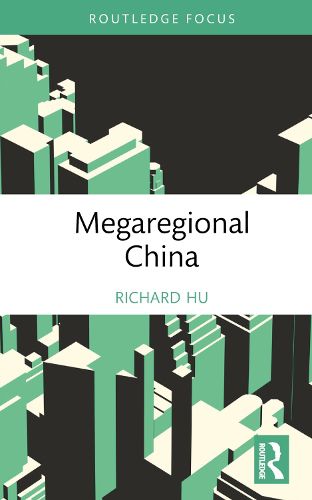Readings Newsletter
Become a Readings Member to make your shopping experience even easier.
Sign in or sign up for free!
You’re not far away from qualifying for FREE standard shipping within Australia
You’ve qualified for FREE standard shipping within Australia
The cart is loading…






This book unravels China's new megaregional structure, new megaregional planning and development, new megaregional governance, and new regional planning system. It draws upon a diversity of megaregional cases: city clusters of the Beijing-Tianjin-Hebei region, Yangtze River delta region, and Greater Bay Area; and metropolitan circles of Chengdu, Hangzhou, Hong Kong, Shanghai, Shenzhen, and Zhengzhou.
Megaregions are the new form of Chinese-style urbanisation. China's new discourse of 'high-quality development' and 'new-type urbanisation' is reshaping its megaregional strategy. Imbalance and fragmentation characterise the diversity of megaregions - developed or developing, coastal or inland. The central goal of megaregional planning and governance is to achieve integrated, balanced development of them. Hu challenges the official notion of 'top-level design' that dominates the planning, governance, and development of China's megaregions. Instead, he argues for the importance of engaging nongovernmental stakeholders, rebalancing the government-market relationality, encouraging bottom-up initiatives, and enabling grassroots ingenuity.
The volume offers the first and most comprehensive study of megaregional China in the new contexts of both national development and urban development. It will be of interest to anyone looking into urban and regional development, and Chinese studies.
$9.00 standard shipping within Australia
FREE standard shipping within Australia for orders over $100.00
Express & International shipping calculated at checkout
This book unravels China's new megaregional structure, new megaregional planning and development, new megaregional governance, and new regional planning system. It draws upon a diversity of megaregional cases: city clusters of the Beijing-Tianjin-Hebei region, Yangtze River delta region, and Greater Bay Area; and metropolitan circles of Chengdu, Hangzhou, Hong Kong, Shanghai, Shenzhen, and Zhengzhou.
Megaregions are the new form of Chinese-style urbanisation. China's new discourse of 'high-quality development' and 'new-type urbanisation' is reshaping its megaregional strategy. Imbalance and fragmentation characterise the diversity of megaregions - developed or developing, coastal or inland. The central goal of megaregional planning and governance is to achieve integrated, balanced development of them. Hu challenges the official notion of 'top-level design' that dominates the planning, governance, and development of China's megaregions. Instead, he argues for the importance of engaging nongovernmental stakeholders, rebalancing the government-market relationality, encouraging bottom-up initiatives, and enabling grassroots ingenuity.
The volume offers the first and most comprehensive study of megaregional China in the new contexts of both national development and urban development. It will be of interest to anyone looking into urban and regional development, and Chinese studies.